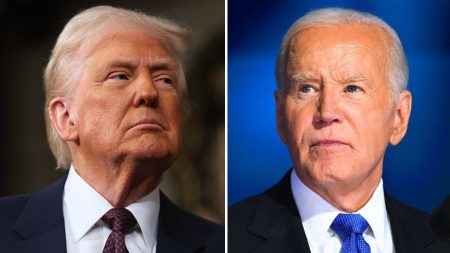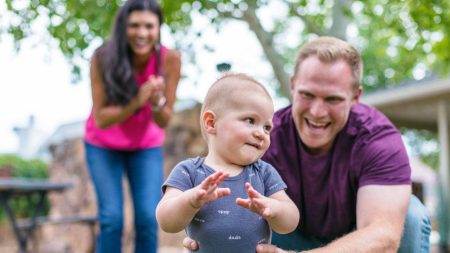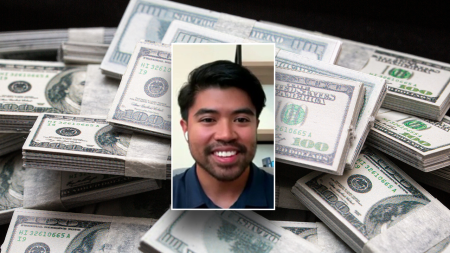Carol Spencer didn’t just dress Barbie dolls — she designed the clothes the iconic doll wore for 35 years.
When Spencer, now 90, left high school, there were only a handful of jobs available to women: the role of a wife and mother, a nurse, a teacher, a secretary or a clerk, she said. “I really didn’t want to devote my years to any of those.” She always appreciated fashion, she said, and growing up, she wanted to be fashionable. The future designer watched her grandmother sew and learned how to make garments for herself that she would wear to school.
From 1963 to 1998, as part of Mattel Inc.
MAT,
she designed garments for Barbie to wear, too.
Spencer was the first and only designer to have her signature stamped on the back of a doll, and was the designer behind the biggest selling Barbie doll, the Totally Hair Barbie, released in 1992. There is a wing dedicated to her dolls at the United Federation of Doll Clubs in Kansas City, Mo., and more of her doll designs reside at the Strong National Museum of Play in Rochester, N.Y. Many of her creations are still at home, some displayed around her dining room.
Her book, “Dressing Barbie: A Celebration of the Clothes That Made America’s Favorite Doll and the Incredible Woman Behind Them,” published by Harper Collins, was rereleased in June, a month before the highly anticipated movie “Barbie” came out, featuring Margot Robbie and Ryan Gosling.
See: This Barbie ‘holy grail’ doll is on sale for $25,000 — but one rare Barbie collectible could fetch $1 million
Spencer spoke with MarketWatch about her career and how Barbie has changed through the decades.
MarketWatch: What was the inspiration behind your Barbie designs?
Carol Spencer: When I started with the Barbie doll in 1963, it was explained to me the plan for the Barbie doll that was laid out by Ruth Handler [the creator of Barbie, and a founder, with her husband Elliot Handler, and Harold Matson, of Mattel]. She had watched her daughter play with paper dolls and she envisioned a three-dimensional doll, and that’s exactly what the Barbie doll became. She wanted Barbie to be introduced as a teenage fashion model. She was really to look like a real person.
For inspiration we were to follow the trends of what was happening, whether it be within the world of fashion or music or whatever. She was not to be a leader, but she was to be in understandable fashion.
“ We watched the children play and we watched how intricately they would play with the doll: how they’d dress them and what they were capable of doing, and sometimes we learned their dreams. ”
MW: There has been so much hype for this upcoming Barbie movie. Why do you think so many people are so excited about it?
Spencer: Barbie came to this world in 1959 and children fell in love with her immediately, but also their parents liked the Barbie doll. The details, the accuracy of the fashion to the era. They began collecting Barbie dolls.
Mattel had visions that a child could dream and they could dream of things for the future and when we watched child tests, we watched the children play and we watched how intricately they would play with the doll: how they’d dress them and what they were capable of doing, and sometimes we learned their dreams. Barbie became something very special, in many different ways, to each child or each parent.
MW: Since your retirement, how have you seen Barbie change through the years?
Spencer: I retired at the very end of 1998 and at that time she was still pretty much the same play pattern… the dress, undress. We also had roughly 10 years of collector dolls designed expressly for the collector market.
Since then, Barbie has evolved — again, according to Ruth Handler’s plan — which was to become as life-like as possible, and so, in 2015, we had four different sizes of Barbie doll. We had the petite, we had the tall, we had the curvy, as well as the original Barbie doll. Children loved her when she came out like that because so many of them related to seeing Barbie as exactly as they were. They saw themselves, or part of their dreams.
That stopped the dress-undress play pattern so then she went more strongly in careers. So many children loved to play out different careers. What would you do if you were a forest ranger? What would you do if you were a firefighter? What would you do if you were president? They had lots of fun to see how they might feel.
“ We had the petite, we had the tall, we had the curvy, as well as the original Barbie doll. Children … related to seeing Barbie as exactly as they were. ”
MW: Some people have criticized Barbie’s dimensions. Was change happening even before you retired?
Spencer: There were various people commenting on the shape of the Barbie doll, starting back in the 1960s, but we never addressed it because she was a teenage fashion model. But realistically speaking, when the doll was first sculpted, they found that they had to reduce the waist a little bit because of the thickness of the fabric. When you create a seam at the waistline, it made her bulge at that point, so they reduced it to allow for four layers of a thin fabric. They wanted her to look like she was actually modeling the garment, and they had to hollow out under her armpits and at the top of her legs because they had to allow for the thickness of the seams. You must remember, a doll that is 11 ½ inches tall — one-sixth the size of a human being — using fabric used for a human being, it becomes rather thick in places.
“ There were various people commenting on the shape of the Barbie doll, starting back in the 1960s, but we never addressed it because she was a teenage fashion model. ”
MW: And speaking of your retirement… what have you been up to since retiring?
Spencer: I retired at the very end of 1998 and I thought, oh my goodness, what am I going to do with myself? I did have a license with Mattel to write a book on the Barbie doll but it was difficult getting them to acknowledge that at that point, so I decided I would volunteer in the neighborhood. I would work with various projects with the city of Los Angeles to help the neighborhood.
As time went by, I was able to work things out and actually write the book, which I dreamed of writing. That took a couple of years to write. I had to hire a ghostwriter. They did allow me to take roughly 60 some-odd pictures for the book because I had always loved photography. More recently, I took classes with a Beverly Hills photographer, the protege of Ansel Adams.
MW: Do you have a favorite design or version of Barbie?
Spencer: My favorite Barbie is the first one that bore my name with a byline as the designer for the doll and that is Benefit Ball Barbie doll, and she came out in 1992. From that time forward, Mattel featured Barbie designers who had designed various fashions because they found out that actually the public at large loved to know who designed the fashions. Another one is Totally Hair Barbie doll, and I did her in the early ‘90s. She became the biggest selling Barbie doll of all time, and she still holds that record. And I would think the third one I dearly loved is Golden Jubilee doll, and that’s the one that bears my signature.
Also see: Barbie boost: These stocks could be in the pink amid movie buzz
MW: Barbie had many careers. Was it always the plan for her to take on those roles?
Spencer: When she was introduced, she was a teenage fashion model. The next line, she became an astronaut. It started evolving, but it evolved slowly, and the astronaut was tongue-in-cheek. Should they do it, should they not? [Editor’s note: The first astronaut Barbie was released in 1965, four years before the first man walked on the moon.]
It wasn’t until 1972 that the company started exploring if a child would want to play with a fashion that actually portrayed what you would wear in a certain occupation, and so it was at that time that I designed Doctor Barbie, but she was also a surgeon. Surgeons in the operating room, most of the surgeons, were men at the time. Most of the doctors were men at the time… why not have a woman doctor? When they did a beautiful exhibit of the Barbie doll at the Louvre museum, that surgeon Barbie was on every advertisement.
From there, she became a singer, an exercise guru. She did so many things, and it all helped the child to play out the fun.
“ I designed Doctor Barbie, but she was also a surgeon. Surgeons in the operating room, most of the surgeons, were men at the time. ”
MW: What do you think is the future of Barbie?
Spencer: Back to Ruth Handler’s plan… Barbie evolves as we evolve, so what is the future for us? What are we going into? That is where Barbie is going. She will become something for the child to dream with. But I don’t look into the future.
Read the full article here














